Children's Health and Wellbeing - Horizon Scanning Review
The review summarises the predicted societal trends and shifts that will likely shape the lives of children and young people over the next decade.
2. Demography
This section describes current population trends and future population projections.
2.1 Current population trends
Scotland’s population profile is progressively shifting towards the older age groups, with children and young people making up an increasingly smaller proportion of the overall population. As Figure 1 illustrates, the number of people in all age groups under 45 has decreased slightly over the last ten years, while the number in all older age groups has increased substantially.[3]
Figure 1. The changing structure of Scotland’s population, 2007-2017
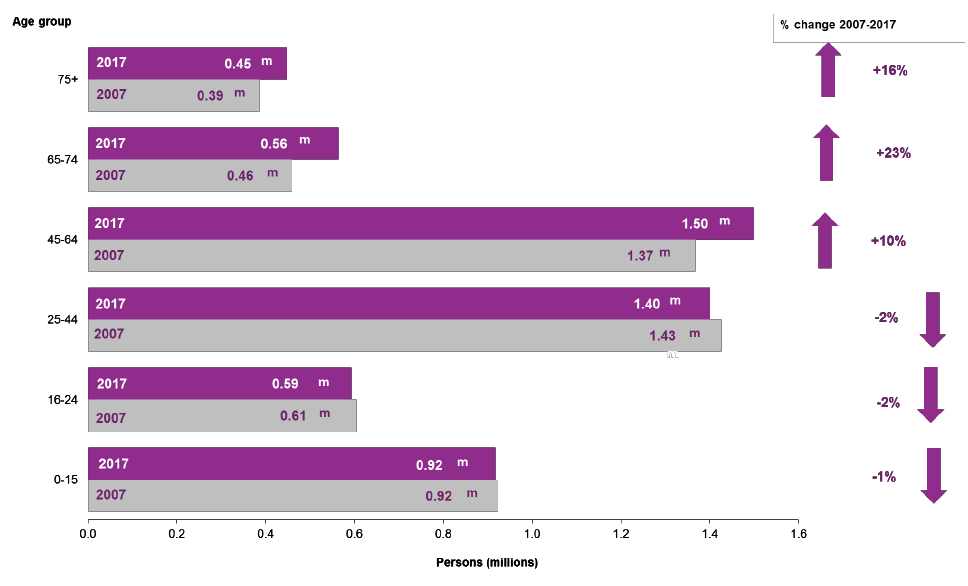
Source: National Records of Scotland 2017
2.2 Future population growth
Scotland’s population is projected to grow to 5.69 million in 2041 (see Figure 2).[4] These estimates have the potential to fluctuate significantly due to the uncertainty surrounding future immigration regulations and the attractiveness of the UK/Scotland as an immigration destination after leaving the EU.
Figure 2. Scotland’s Population Projections 2016-2041
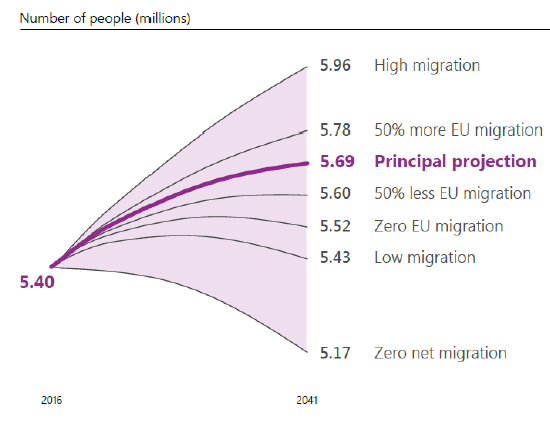
Source: National Records of Scotland 2018
Future population structure
The population profile in Scotland, as well as the UK as a whole, is expected to continue to shift towards older age groups over the next 10 years. The number of people aged 75 or over is projected to increase by 27% between 2017 and 2026, and by 79% in 2041. The proportion of young people aged 15 and under is expected to decline by 2% to 2041. The proportion aged 16-24 is projected to decrease by 8% by 2041. This is illustrated in Figure 3.[5]
Healthy life expectancy
An ageing population is associated with higher levels of ill health, including chronic and multiple longstanding conditions. The increase in life expectancy, or the number of years a new born baby is expected to live, over the last decade has not been matched by an increase in healthy life expectancy, or the number of years a new born baby is expected to live in ‘good health’. This means that which will result in additional pressures being placed on existing health care services. This added pressure will likely have an indirect effect on children’s health services unless extra resources are provided to support health services.
Future household family demographic
The number of households in Scotland is projected to increase to 2.76 million by 2041, an average annual increase of approximately 12,700 households. This is partly because Scotland’s population is ageing, as older people are more likely to live alone or in smaller households.[6] Households containing just one adult with children are projected to increase by 22%, from 159,200 to 194,400 households. The proportion of households of this type remains roughly constant.
Figure 3. Scotland’s projected population structure, 2017 compared to 2041.
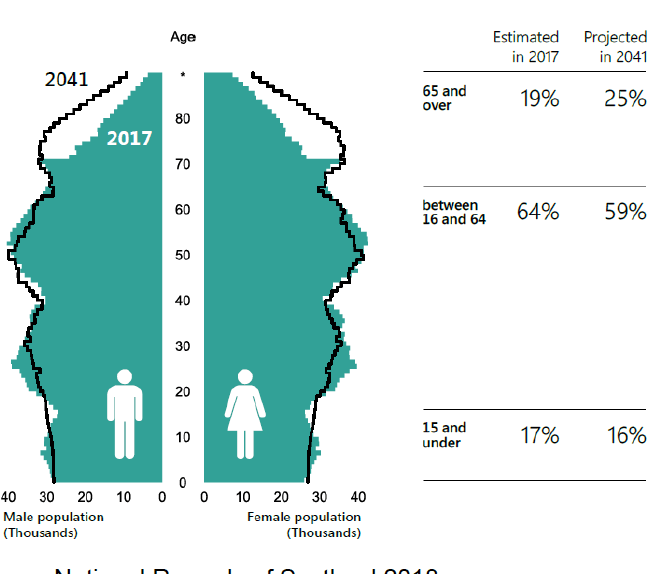
Source: National Records of Scotland 2018
Figure 4. Scotland’s projected number of households by family demographic, 2017 compared to 2041.
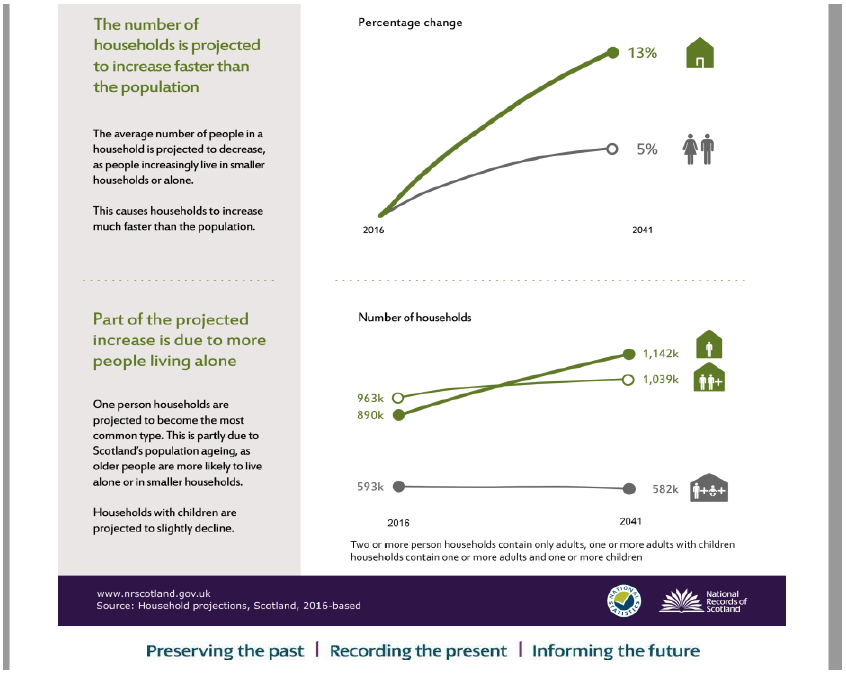
Source: National Records Scotland 2018
In 2016, 18% of all households in Scotland contained two or more adults with children. This is projected to fall to 14% by 2041, a reduction of 11% in household numbers. There are projected reductions in the numbers headed by someone under 45, but increases in all older age groups. Figure 4 illustrates the number of households by family demographic.
Future urbanisation
Scotland’s projected population growth shows a general shift towards urban living, with most councils projecting a population decrease in rural areas. A large proportion of the population growth is in eastern urban areas of Scotland (see Figure 5).[7] Continued internal migration for education and work may negatively impact young people’s feelings of connectedness to community.
Figure 5. Scotland’s projected population change by council area, between 2016 and 2026
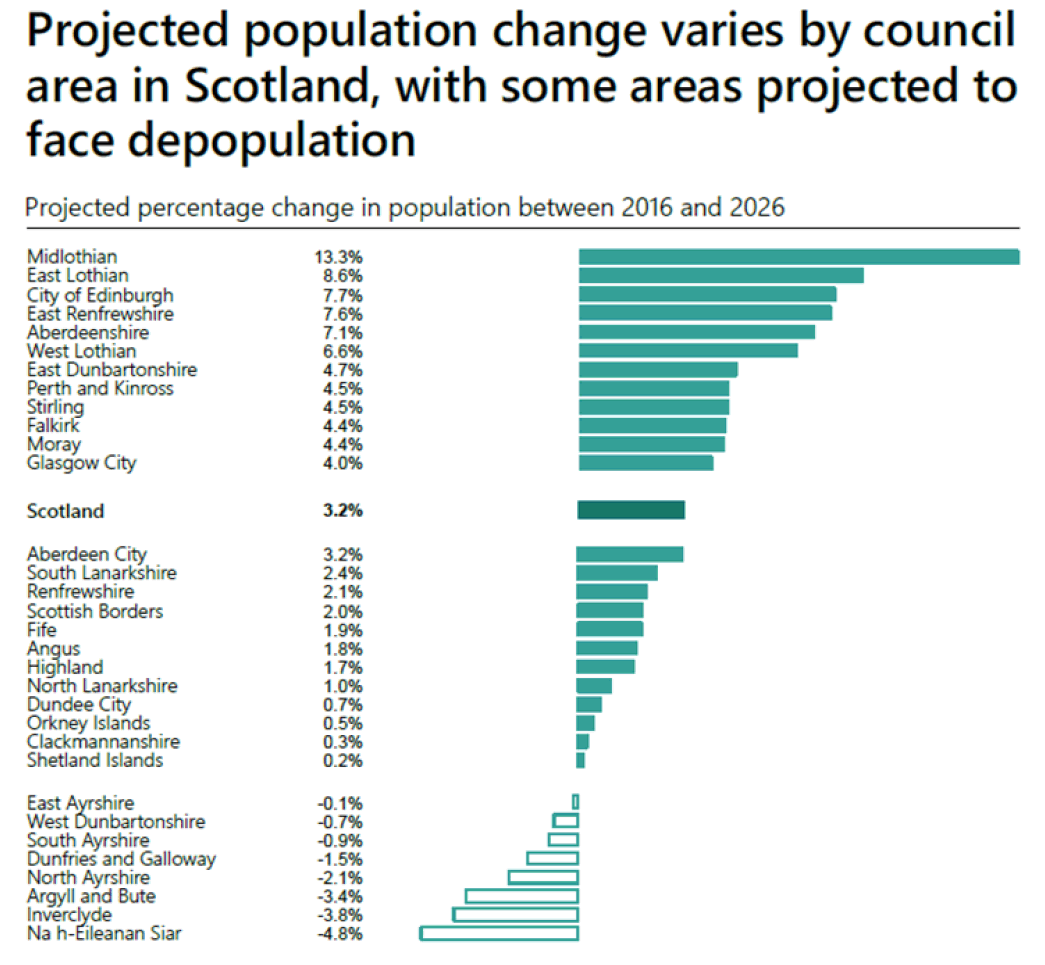
Source: National Records Scotland 2018
2.3 Key points
- Population ageing is expected to continue and this will lead to increasing pressure on health and social care services, which is likely to indirectly affect the health and wellbeing of children in the future.
- The number of households in Scotland is expected to increase over the next 20 years, with the most significant rise being in households with a single adult living alone, including single occupancy older adult households, and single parent households.
- Urbanised living will continue to increase in Scotland which may impact young people’s feelings of connectedness to community.
Contact
Email: socialresearch@gov.scot
There is a problem
Thanks for your feedback